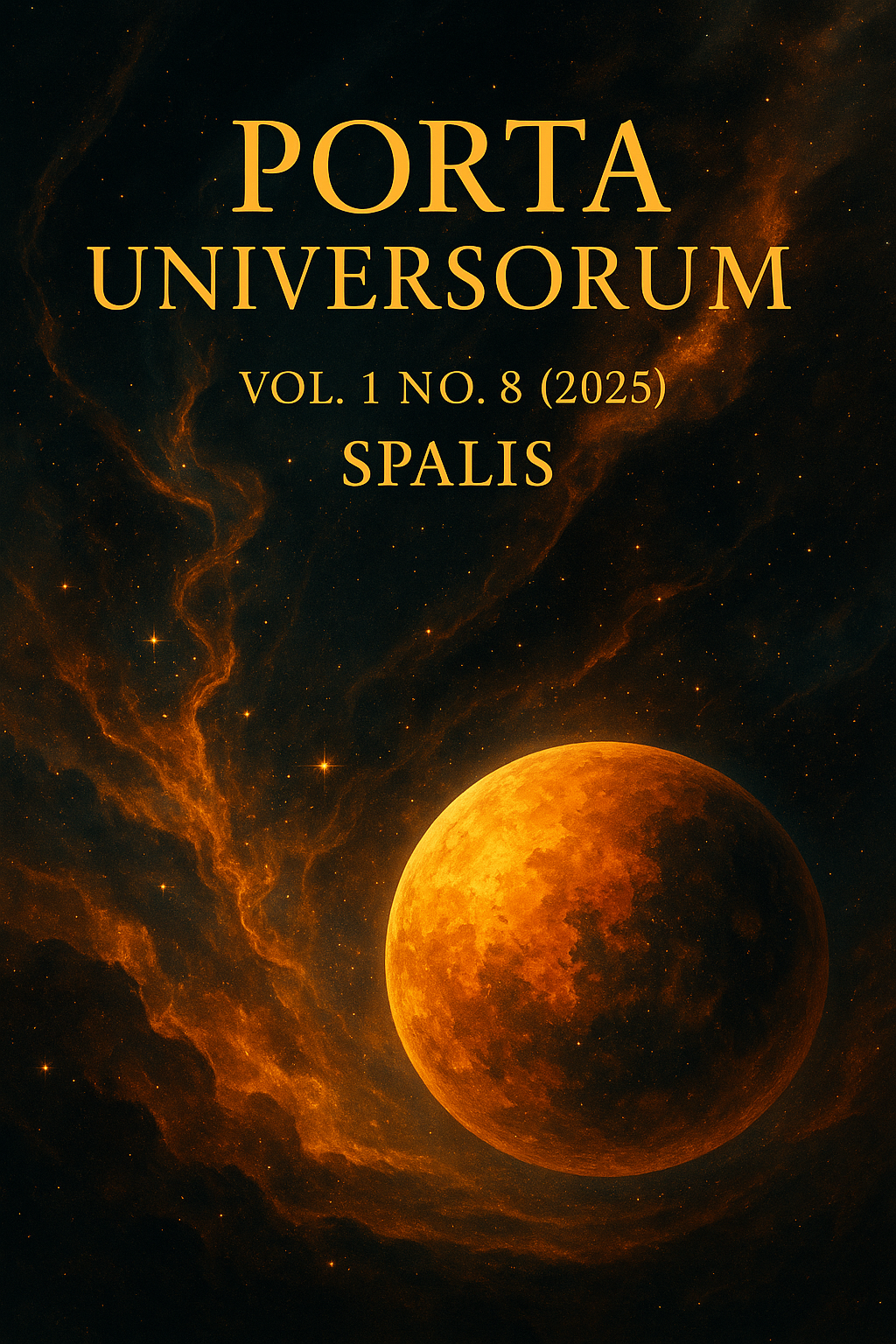The Symbolism of Time in the Flying Carpet and the Wind Horse: Chaos-Cosmos Transitions in Nakhchivan Folklore
DOI:
https://doi.org/10.69760/portuni.0108001Keywords:
sacred time, flying carpet, wind horse, Nakhchivan folkloreAbstract
This article examines how two recurring motifs—the flying carpet and the wind horse—encode distinct temporal logics in Nakhchivan/Azerbaijani folklore. Through close readings of tales and beliefs (e.g., “Prince Bendali,” the Solomon carpet legend, Koroghlu cycles, Yel Baba verses, “The Forty-Bud Lady”), it shows that the flying carpet suspends profane duration by enabling instantaneous ascent into sacred, cosmic space, whereas the wind horse accelerates and safeguards passage through a liminal interval toward order. This chaos-to-cosmos movement structures plot, regulates the hero’s trials, and marks the hosting texts as sacral. The carpet functions primarily as a cosmological device activated by magical word or talisman; the horse acts as a sentient companion whose vigilance, color symbolism, and ritual associations (horseshoe luck, winged-birth lore) guide and protect. Juxtaposing these “cosmic vehicles” clarifies how folklore models time not only as measure but as power that can be collapsed, stretched, or ethically mediated—offering a compact framework for regional analysis and teaching.
References
Kujundžić, N. (2012). Flying horses and magic carpets. Means of transport in Slavic fairy tales for young readers. Narodna umjetnost-Hrvatski časopis za etnologiju i folkloristiku, 49(1), 81-94.
KUJUNDŽIC, N. (2012). FLYING HORSES AND MAGIC CARPETS. MEANS OF TRANSPORT IN SLAVIC FAIRY TALES FOR YOUNG READERS. Croatian Journal of Ethnology & Folklore Research/Narodna Umjetnost, 49(1).
Van Riet, C. M. (2012). The kite: A Symbol in Nineteenth-Century Literature (Master's thesis).
Fang, Z. (1996). Illustrations, text, and the child reader: what are pictures in children's storybooks for?. Reading Horizons: A Journal of Literacy and Language Arts, 37(2), 3.
Fang, Z. (1996). Illustrations, text, and the child reader: what are pictures in children's storybooks for?. Reading Horizons: A Journal of Literacy and Language Arts, 37(2), 3.
Williams, C. A. S. (1976). Outlines of Chinese symbolism and art motives: an alphabetical compendium of antique legends and beliefs, as reflected in the manners and customs of the Chinese. Courier Corporation.
Heydarova, A. (2023). INFORMATIVE CODE OF AZERBAIJANI CARPET AND ITS ORNAMENT-SYMBOL. Scientific Journal of Polonia University, 56(1), 53-57.
Xudaverdiyeva, T. (2023). Epic Time in Azerbaijan Folk Tales (Based on Folk Tales Gathered in Nakhchivan). Akademik Tarih ve Düşünce Dergisi, 10(2), 163-177.
Saleh, G. H. P. (2025). Traces of Multicultural Values in Folklore and Written Examples. US-China Education Review, 15(4), 322-328.
Mustafayev, S. (2007). The history of sovereignty in Azerbaijan: A preliminary survey of basic approaches. Caucasus paradigms. Anthropologies, histories and the making of a world area, 95-119.
Khudaverdiyeva, T. ABOUT THE CHTHONIC WORLD IN AZERBAIJANI FAIRY TALES: TIME AND SPACE. EARTH SCIENCES, 50.
Chobanov, M. Azerbaijani-Georgian Literary Relations through Historical Development Process.
Ismayilova, N. (2023). The role of national spiritual values in children’s reading-teaching (based on Nakhchivan Children’s Folklore and new teaching methods). Revista on line de Política e Gestão Educacional, e023024-e023024.
Downloads
Published
Issue
Section
License
Copyright (c) 2025 Porta Universorum

This work is licensed under a Creative Commons Attribution-NonCommercial 4.0 International License.
License Terms
All articles published in Porta Universorum are licensed under the Creative Commons Attribution–NonCommercial 4.0 International License (CC BY-NC 4.0). This license permits:
-
Sharing (copying and redistributing the material in any medium or format),
-
Adapting (remixing, transforming, and building upon the material),
-
for non-commercial purposes only,
-
with proper attribution to the original author(s) and source.
Commercial use of the material is not permitted without prior written permission from the publisher.




